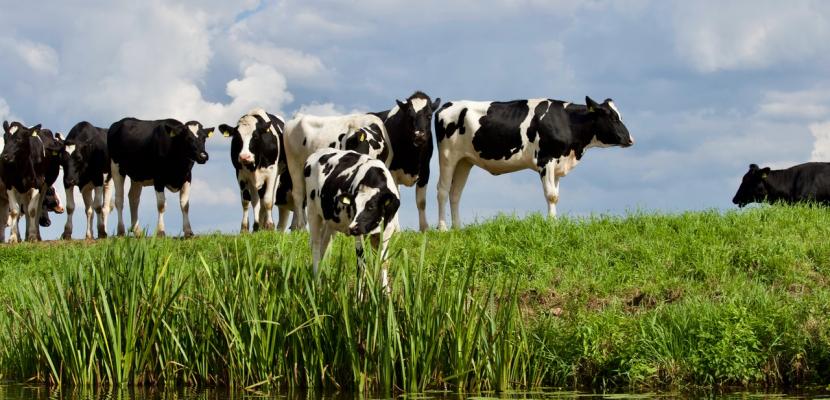Image

Energy self-sufficient Kuittila farm
Published on 19 May 2020

Finland
Pohjois- ja Itä-Suomi
This is the good practice's implementation level. It can be national, regional or local.
About this good practice
The farmer was interested in decreasing energy costs and producing own energy for the farm and a repair workshop located on the site. The farm has a dairy herd of 150 cows. The annual electricity consumption of the cow shed, repair shop, grain dryer, main building and wood chip dryer is c. 340,000 kWh and heat consumption c. 700,000 kWh.
In 2012, the farmer invested in a CHP (combined heat and power) system manufactured by Finnish Volter Ltd. The solution is unique because it produces electricity and heat by gasification of wood. The 140 kW CHP plant generates c.150 MWh of electricity and 375 MWh of heat a year. It consumes 700 m3 (loose volume) of wood chips per year. The farm has a 1,000 m3 storage facility and the wood chips are mechanically dried by using the waste heat of the plant. Wood chips with a moisture content of less than 18% are burned to process gas and converted into electricity and heat in an internal combustion engine. Wood chips are preheated before gasification in pyrolysis area.
Gasification temperature is 900-1,200 C. Gas is cooled from 550 to 200 C filter temperature. Fine soot is filtered, after which gas is cooled to 50 C, and ready for combustion. Combustion engine runs the generator, producing high-quality electricity for the farm. Excess electricity is sold to the national grid. The heat from the gas and engine cooling is utilised in the farm’s micro-scale heating network.
In 2012, the farmer invested in a CHP (combined heat and power) system manufactured by Finnish Volter Ltd. The solution is unique because it produces electricity and heat by gasification of wood. The 140 kW CHP plant generates c.150 MWh of electricity and 375 MWh of heat a year. It consumes 700 m3 (loose volume) of wood chips per year. The farm has a 1,000 m3 storage facility and the wood chips are mechanically dried by using the waste heat of the plant. Wood chips with a moisture content of less than 18% are burned to process gas and converted into electricity and heat in an internal combustion engine. Wood chips are preheated before gasification in pyrolysis area.
Gasification temperature is 900-1,200 C. Gas is cooled from 550 to 200 C filter temperature. Fine soot is filtered, after which gas is cooled to 50 C, and ready for combustion. Combustion engine runs the generator, producing high-quality electricity for the farm. Excess electricity is sold to the national grid. The heat from the gas and engine cooling is utilised in the farm’s micro-scale heating network.
Expert opinion
Bioenergy is a truly local energy resource, with technologies able to make use of locally available resources, including wastes. This practice is especially promising because of its use of a CHP plant, where many single farms instead install heat only systems – especially those of small scale – as boilers are cheaper than CHP plants, and as there is also a need to find a use for the electricity which brings some additional complexity and costs. Transferability will depend on regional factors (biomass availability, regulatory framework, availability of financial support), but should certainly be encouraged. An excellent example of decentralised energy production.
Works at
Interreg Europe Policy Learning Platform
Resources needed
The total cost of the plant was c. 350,000 €: CHP unit and buildings cost around 220,000 €. The estimated payback period is 10 years. The farm received support for planning and implementation of the investment from an EAFRD project and 35% of investment support from ELY centre.
Evidence of success
The plant has been operating for several years and it has attained significant status as a small-scale CHP demonstration site in the region, both nationally and internationally. The small-scale CHP technology is innovative as it uses wood chips to generate heat and electricity.
Thanks to the investment, the farm is now almost energy self-sufficient. They need to buy fuels for machines.
Thanks to the investment, the farm is now almost energy self-sufficient. They need to buy fuels for machines.
Potential for learning or transfer
The energy system improves security of energy supply in farms and reduces the risks associated with climatic and weather conditions. In addition, the investment leads to significant carbon emission reductions and creates a positive image for the entrepreneur.
The practice would be potentially interesting for regions that have good forest resources. The Kuittila farm harvests its biomass mainly from local forests (thinning). The harvesting of small-sized wood improves the forest growth and provides high-quality fuel. The high quality pre-dried fuel, together with advanced combustion technology ensure low emissions and reduces harmful environmental and health impacts. The resulting ash can be used as forest fertiliser.
The CHP plant has opened additional business opportunities for the farm. The excess heat can be utilised in drying of forest fuel, in other farming activities or, for example, in hydronic underfloor heating, preheating of air-conditioning or domestic water.
The practice would be potentially interesting for regions that have good forest resources. The Kuittila farm harvests its biomass mainly from local forests (thinning). The harvesting of small-sized wood improves the forest growth and provides high-quality fuel. The high quality pre-dried fuel, together with advanced combustion technology ensure low emissions and reduces harmful environmental and health impacts. The resulting ash can be used as forest fertiliser.
The CHP plant has opened additional business opportunities for the farm. The excess heat can be utilised in drying of forest fuel, in other farming activities or, for example, in hydronic underfloor heating, preheating of air-conditioning or domestic water.
Further information
Website
Good practice owner
You can contact the good practice owner below for more detailed information.
Organisation
Kuittila farm

Finland
Pohjois- ja Itä-Suomi
Contact
Project planning officer
